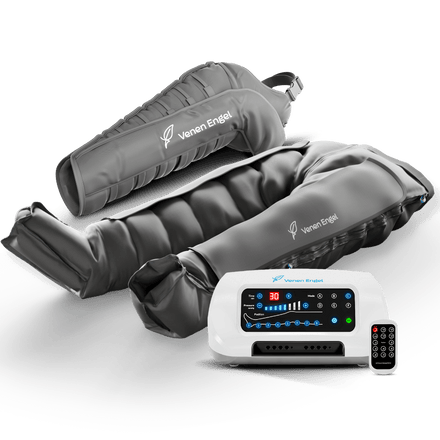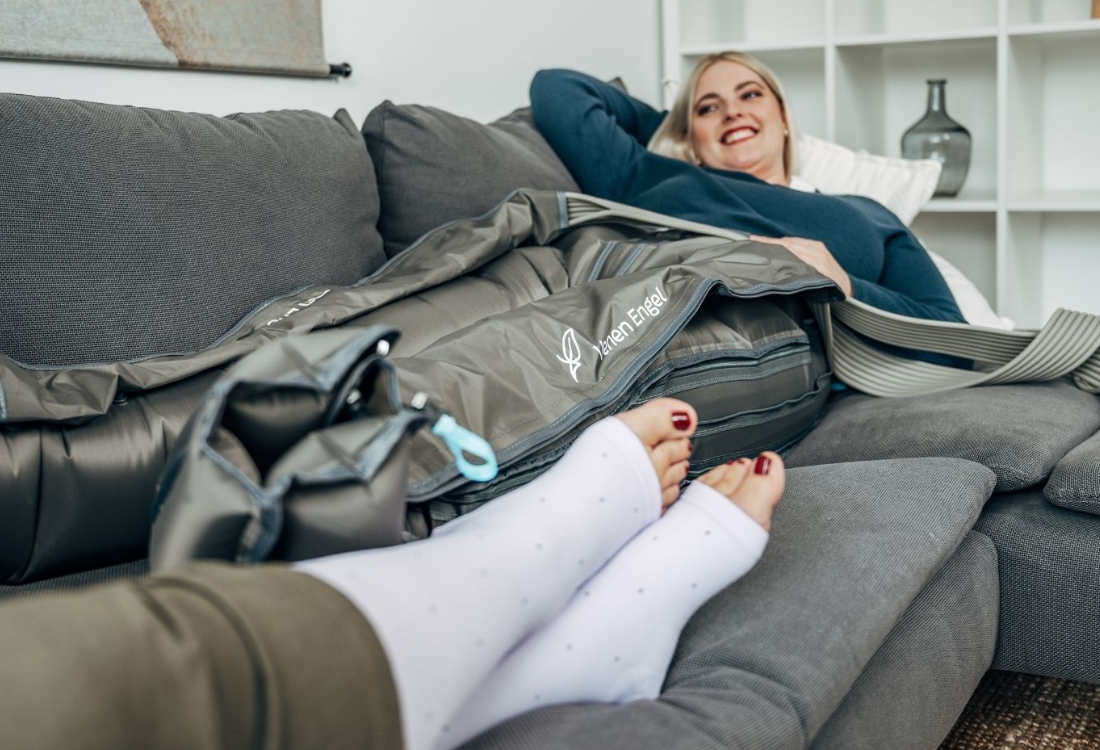
Prevent swelling & improve blood circulation
A long day at the office or standing can lead to swollen legs and feet. This happens because the blood and fluids stagnate and accumulate in the lower extremities. Compression stockings apply targeted pressure to the legs, which helps promote blood circulation and reduce fluid accumulation. This prevents swelling, and you can feel more comfortable throughout the day.
Good blood circulation is crucial for your overall health and well-being. In the workplace, especially in jobs that require long periods of sitting or standing, circulation can easily be impaired. Compression stockings support vein function by pumping blood back to the heart, thereby improving circulation. This reduces the risk of varicose veins and thrombosis and helps you stay more energetic and focused.

Compression stockings for standing professions
For professions that require long periods of standing, compression stockings are particularly beneficial. They provide support and alleviate the strain on veins, thereby reducing pain and swelling. This is especially important for people in the hospitality, retail, or healthcare industries, where standing for hours is often the norm.
Requirements for legs in the gastronomy, retail, and care industry
Jobs in the hospitality, retail, and healthcare or caregiving sectors are often physically demanding. The legs, in particular, are heavily strained in these professions. Here are the specific requirements and challenges for each area:
In the hospitality industry , long working hours and intensive walking and standing are the norm. The staff is constantly on their feet, often without longer breaks.
A Day in the Restaurant Industry
The day begins early by preparing the restaurant for guests: arranging tables and chairs and setting the tables. During service times, there is a lot of running back and forth to take orders, serve food, and clear the tables. The work is often hectic, especially during peak times like lunch and dinner. Breaks are rare and short.
In retail, employees also spend a lot of time on their feet. Here, it is mainly standing at the cash register and walking around the store to help customers or restock shelves.
A Day in Retail
The workday begins with restocking the shelves and organizing the warehouse. Most of the day is spent in the sales area, where customers are advised, products are presented, and possibly heavy goods are transported. Standing or walking at the checkout, payments are received and purchases are packed.
In the care industry, the demands on the legs are particularly high. Caregivers and doctors often have to work long shifts that require intensive physical labor.
A Day in Care
The workday begins with the morning care of patients, which includes lifting and repositioning patients. The rest of the day, caregivers spend administering medication, changing bandages, and assisting with daily tasks such as going to the toilet or eating. Often, emergencies need to be handled, requiring quick reactions and intense physical effort.
Jobs in gastronomy, retail, and the healthcare and nursing sectors place high demands on the legs. Long periods of standing and walking, as well as carrying heavy loads, are typical challenges that can lead to physical discomfort.
Tips for the Workday
Compression stockings and targeted exercises can significantly help reduce the strain on the legs in professions such as gastronomy, retail, and the healthcare or nursing sector.
Compression stockings exert pressure on the legs, which decreases from the ankle region upwards. This promotes blood circulation and reduces the strain on the legs.
Recommended exercises for the legs
In addition to wearing compression stockings, regular exercises can help strengthen muscles, promote circulation, and maintain flexibility.
In addition to exercises and wearing compression stockings, there are other ways to support your legs:
- Regular breaks: If you stand a lot, incorporate regular short breaks to sit down and elevate your legs into your daily routine, as this can help relieve your legs.
- Incorporate movement: If you sit a lot, try to integrate as much movement as possible throughout the day, e.g., through short walks.
After work comes relaxation for tired legs
After a long day at work, it's important to do something good for your legs: Elevate your legs to promote blood circulation and reduce swelling. A gentle compression massage can also help to relax and refresh the legs. Make sure to take good care of your skin and use moisturizing lotions regularly. Your compression stockings compression stockings from Venen Engel help prevent swelling, improve blood circulation, and support your legs—whether you spend the whole day sitting at a desk or standing—rely on Venen Engel and experience how much easier your workday can feel.
Venen Engel Compression Stockings













